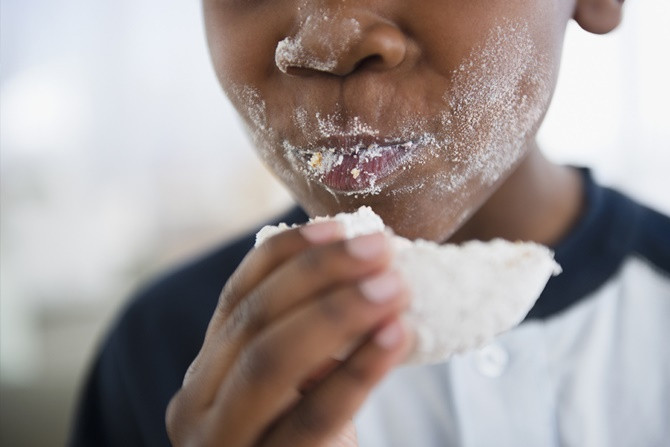Why is sugar so sticky?
White sugar and salt are very confusing and you must have fallen into the scene of your grilled salty "horrible" because "twins" are quite similar in appearance.
But when adding a bit of water, the twins became completely different. Both salt and sugar crystals begin to dissolve in the water, but the sugar is sticky and salt is not . Why so?

Hydro is the key to sugar stickiness.
According to How Stuff Works, Hydro is the key to stickiness of sugar . Sugar is a solid, its molecules made of carbon, hydrogen and oxygen atoms. Sugar crystals are intact and do not stick together - you can easily refine sugar. But with the presence of fluids, strong oxygen-hydrogen bonds in the road will start to break down and liquid hydrogen atoms will look for something else to stick to.
Some hydrogen atoms will stick to the nearest surface, some will take hydrogen molecules in the liquid and some will bind to another hydrogen or oxygen atom in the sugar. As a result, it produces a sticky solution.
Meanwhile, salt is made of sodium and chlorine, so when it dissolves in water there is no hydrogen floating around to stick to anything.
But what about water? Its molecules are also partially formed by hydrogen - why does it not become sticky like sugar when combined with some other substances? This involves sugar having a more complex structure than water. A sugar molecule contains 12 carbon atoms, 22 hydrogen atoms and 11 oxygen atoms - and more hydrogen bonds than a water molecule. When the links in the road are broken, there are many opportunities for the molecules to bind to anything they come in contact with, including other sugar molecules.
On the other hand, each water molecule consists of only two hydrogen atoms and one oxygen atom, so it does not have many "sticky points". Therefore, soluble sugar will be sticky and water itself is not.
- Do you know that fecal sugar is so diverse and the effect on the body is different?
- Why is it so hard to hold the road in my hand a little bit?
- Bac Can preserves rare native native sticky rice varieties
- Eating sugar is extremely harmful, this article will show you how much to eat
- When coming to the Lunar New Year, I wondered why the sugar cake did not flow out?
- The reason you should reduce sugar consumption
- The harmful effects of the road that few people know
- Exotic grenade like 'sticky glue' during World War II
- Sugar is sometimes as dangerous as alcohol
- 8 false beliefs about the road that you do not know
- Discover China's super-durable sticky rice mortar
- Equally hazardous road cigarettes?
 'Fine laughs' - Scary and painful torture in ancient times
'Fine laughs' - Scary and painful torture in ancient times The sequence of numbers 142857 of the Egyptian pyramids is known as the strangest number in the world - Why?
The sequence of numbers 142857 of the Egyptian pyramids is known as the strangest number in the world - Why? History of the iron
History of the iron What is alum?
What is alum?